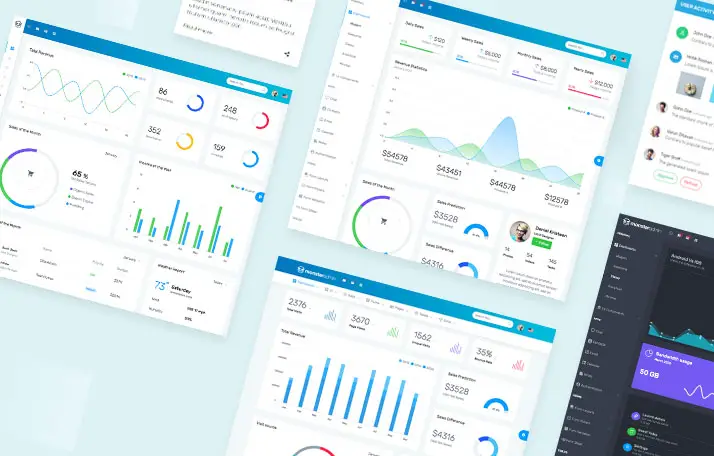What are admin Templates and how can you use them to your advantage?
Before content management systems and other frameworks built on applications, we put our information on static HTML pages. It seems like this happened a long time ago, but it was only a few years ago.
A little bit into the future of the web, we use client-side languages like CSS and JavaScript to style our pages and make them come to life. Because of how well they are built, these frameworks let us make beautiful templates that don't need any other programs. Sure, you need to know a bit about more technical processes and parts to use them, such as:
- Grid systems,
- CSS preprocessors,
- JavaScript tools,
- organizing code,
- and a few other things are all covered.
…But learning a few new tools without having to load them down with extra software can save a lot of time. (Plus, it's never a bad idea to learn something new!) So, let's talk about the admin website Template!
First things first:
First of all, what if you haven't heard of them? Well, you can think of admin website templates as a group of pages that work together to help your web project has a unified management area. Plus, you can use each of them to make an administration area that fits your wants.
“So, isn't this the same as WordPress, Drupal, Joomla, or other content management systems? we can hear you. No, that's not true. These pages are completely self-contained and work together to give you, the end user, everything you need to run your website and make your digital project come to life.
Ok, that's the end of it. But what could really be in an admin template?
Sometimes, they are nothing more than a set of well-designed, simple HTML pages that work together to make it easy for you to manage your site. They may use some of the more advanced features of current web browsers, or they may be more complex and use reusable, styled-components.
Even though they might not be as powerful as some of the platforms we listed above, that doesn't mean they aren't self-contained applications with their own server-side language. Whether they are written in PHP, Python, or Ruby doesn't matter as much as the fact that they are smaller apps that don't have Templates, can't be expanded, and don't try to solve more than one problem.
Instead, the administrative templates focus on doing one thing well. Also, they only try to answer the problem in front of them and nothing else. You're pretty much the only one who can tell how many and what kinds of problems these templates can fix. But they all usually have a lot of the following:
- Fonts,
- A grid method to help you organize your designs,
- Styles for your form fields and buttons,
- Libraries for charting,
- Browser tools that let you do things like crop images, make things responsive so they work on different sites and devices, and more.
Whether you know how to code or not, the admin website templates in our collection will help you make a great website. pichforest will provide Admin Dashboard Template which is easy to use, has great speed, user-Friendly Interface. If you're a creator, you might be able to improve an admin area you've already made by adding features you wouldn't be able to add any other way. If you aren't a creator, on the other hand, you don't have to worry about learning the skill from scratch.
Our collection has a lot of different things, so you can probably find something that fits your wants. Also, keep in mind that we look over every single template that our creative writers send us before we put it up for sale. This means that each asset has been carefully looked at and tested to make sure it meets certain standards for quality and usefulness.
In the end, the good news is that you don't always need bigger pieces of software! Instead, you can use smaller, leaner, more focused tools like admin website templates to help you solve “admin-side” problems and make it easier to handle your websites. Enjoy!





